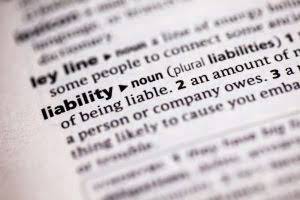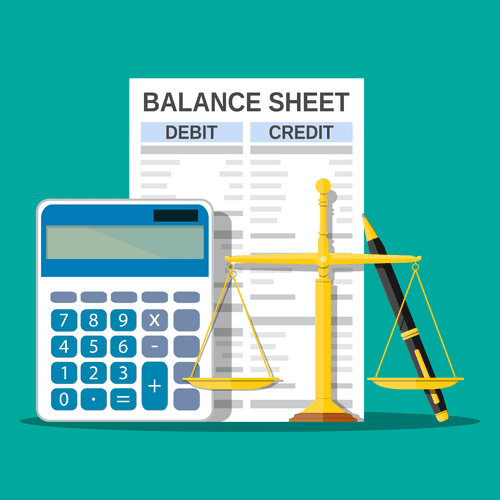
Put another way, it is the amount that would remain if the company liquidated all of its assets and paid off all of its debts. The remainder is the shareholders’ equity, which would be returned to them. These may include loans, accounts payable, mortgages, deferred revenues, bond issues, warranties, and accrued expenses. This straightforward relationship between assets, liabilities, and equity is considered to be the foundation of the double-entry accounting system. That is, each entry made on the debit side has a corresponding entry (or coverage) on the credit side. The market value of equity is also distinct from the book value of equity.

The assets are shown on the left side, while the liabilities and owner’s equity are shown on the right side of the balance sheet. Understanding the shareholder’s equity formula is crucial from the perspective of an investor since it shows the true worth of the shareholders investment in the company. A line item for the shareholder’s equity can be found in the balance sheet of a business or enterprise. The company’s shareholder’s typically care about the company’s profits and are interested in their equity.
COMPANY
This equity represents the net value of a company, or the amount of money left over for shareholders if all assets were liquidated and all debts repaid. Short-term debt also increases a company’s leverage, of course, but because these liabilities must be paid in a year or less, they aren’t as risky. If both companies have $1.5 million in shareholder equity, then they both have a D/E ratio of 1. On the surface, the risk from leverage is identical, but in reality, the second company is riskier. On the balance sheet, the assets of a company equal its liabilities plus equity. The owner’s equity is recorded on the balance sheet at the end of the accounting period of the business.
Equity is important because it represents the value of an investor’s stake in a company, represented by the proportion of its shares. Owning stock in a company gives shareholders the potential for capital gains and dividends. Owning equity will also give shareholders the right to vote on corporate actions and elections for the board of directors. These equity ownership benefits promote shareholders’ ongoing interest in the company.
What is the Accounting Equation?
Although the balance sheet always balances out, the accounting equation can’t tell investors how well a company is performing. Assets represent the valuable resources controlled by a company, while liabilities represent its obligations. Both liabilities and shareholders’ equity represent how the assets of a company are financed.
Balance sheets, like all financial statements, will have minor differences between organizations and industries. However, there are several “buckets” and line items that are almost always included in common balance sheets. We briefly go through commonly found line items under Current Assets, Long-Term Assets, Current Liabilities, Long-term Liabilities, and Equity.
Retained Earnings:
The number of shares authorized is the total number of shares that the corporation may issue under the articles of incorporation of the business. The phrase “number of shares issued” refers to the total number of shares that the corporation has issued which may or may not be owned by outside investors. Venture capitalists (VCs) provide most private equity financing in return for an early minority stake. Sometimes, a venture capitalist will take a seat on the board of directors for its portfolio companies, ensuring an active role in guiding the company. Venture capitalists look to hit big early on and exit investments within five to seven years.
- The underlying principle generally assumes that some leverage is good, but that too much places an organization at risk.
- Because different industries have different capital needs and growth rates, a D/E ratio value that’s common in one industry might be a red flag in another.
- As a highly regulated industry making large investments typically at a stable rate of return and generating a steady income stream, utilities borrow heavily and relatively cheaply.
- Enter your name and email in the form below and download the free template now!
- However, it’s important to note that equity can change over time due to fluctuations in asset values, changes in liabilities, and other financial transactions.
- The entity might choose not to distribute the retained earnings to the shareholders if they need funds to expand its operation.
- Retained earnings reports the firm’s cumulative net income from inception to the most recent accounting period.
If it’s negative, the company has more liabilities than assets, which could put off investors who consider such businesses to be risky investments. Equity held by shareholders, however, is not the only measure of a company’s financial stability. Therefore, it should be used in conjunction with other metrics to provide a more complete view of how a business is doing. The value available to common shareholders divided by the total number of outstanding shares in a corporation is known as book value per share (BVPS). Total equity less preferred equity divided by the number of outstanding shares is the BVPS formula. Preferred stock, common stock, retained earnings, and accumulated other comprehensive income are all included in shareholders’ equity.
How does an expense affect the balance sheet?
Besides his extensive derivative trading expertise, Adam is an expert in economics and behavioral finance. Adam received his master’s in economics from The New School for Social Research and his Ph.D. from the University of Wisconsin-Madison in sociology. He is a CFA charterholder as well as holding FINRA Series 7, 55 & 63 licenses. He currently researches and teaches economic sociology and the social studies of finance at the Hebrew University in Jerusalem. For simplicity, people usually quote the above market value of equity as $889.9 billion. But debt is also the riskiest source of funding for businesses because the latter must honor the agreement with creditors to pay interest on a regular basis regardless of the state of the economy.
Equity is the value of the business left to its owners after the business has paid all liabilities. Items like rent, deferred taxes, payroll, and pension total equity obligations can also be listed under long-term liabilities. Revenues increase stockholders’ equity through retained earnings, and expenses decrease it.
It is calculated either as a firm’s total assets less its total liabilities or alternatively as the sum of share capital and retained earnings less treasury shares. Stockholders’ equity might include common stock, paid-in capital, retained earnings, and treasury stock. If the payment is for the current month’s rent, the second account is to the temporary account Rent Expense which will be debited. The debit to Rent Expense also causes owner’s equity (or stockholders’ equity) to decrease.
What Is Shareholder Equity (SE) and How Is It Calculated? – Investopedia
What Is Shareholder Equity (SE) and How Is It Calculated?.
Posted: Sun, 18 Jun 2023 07:00:00 GMT [source]
